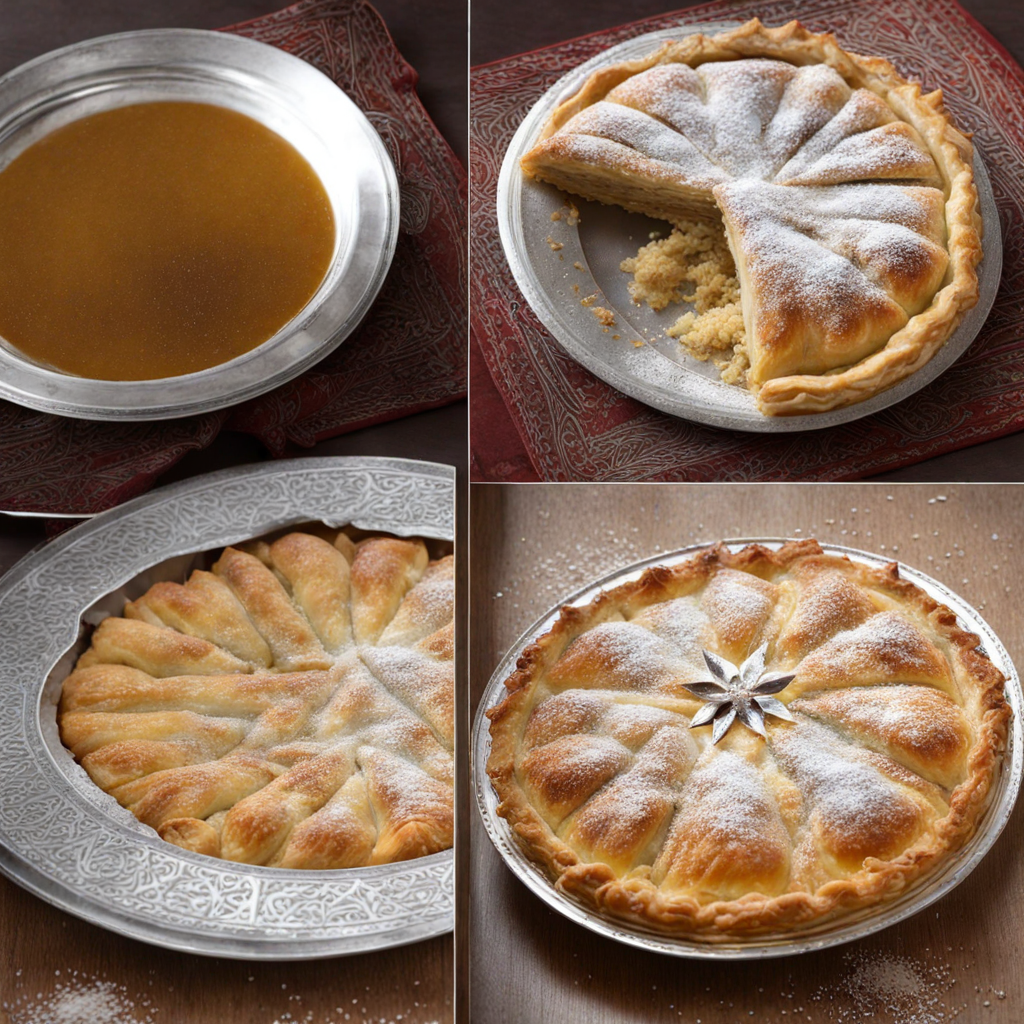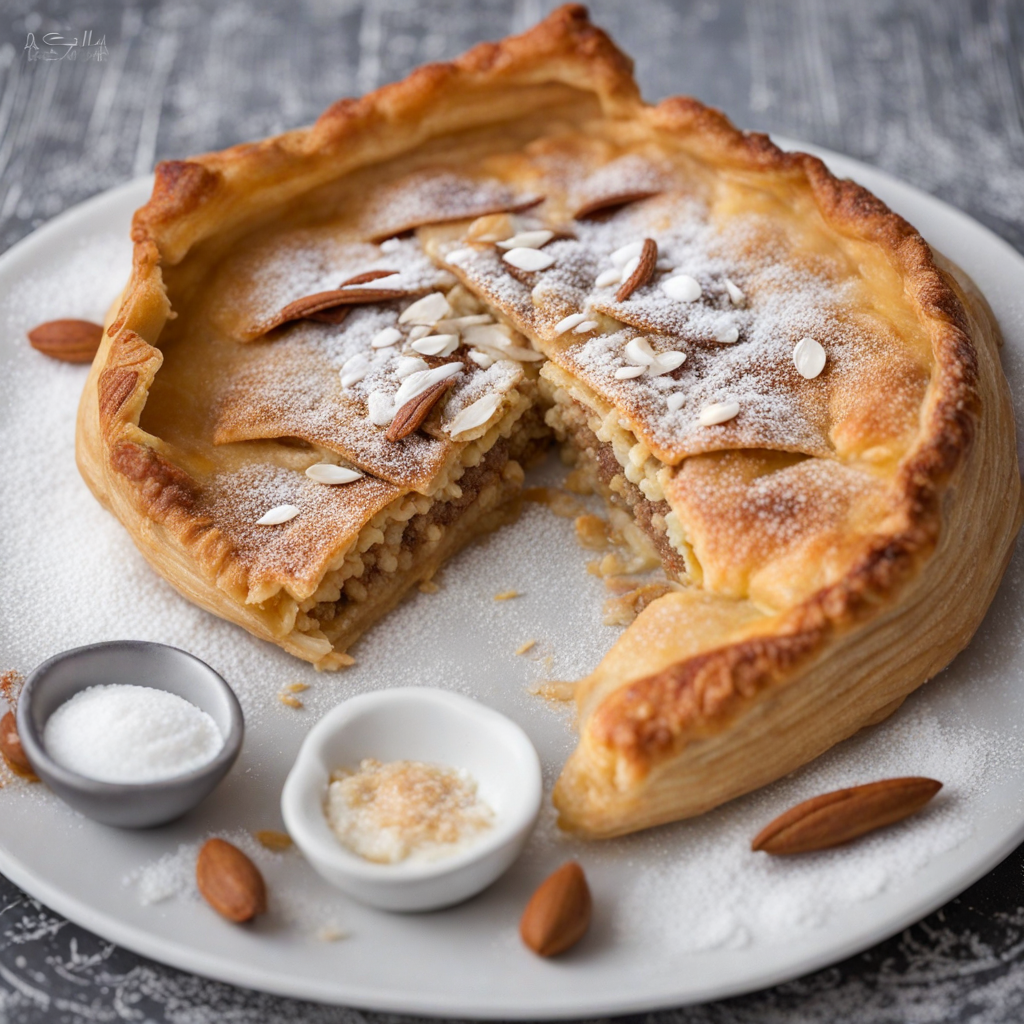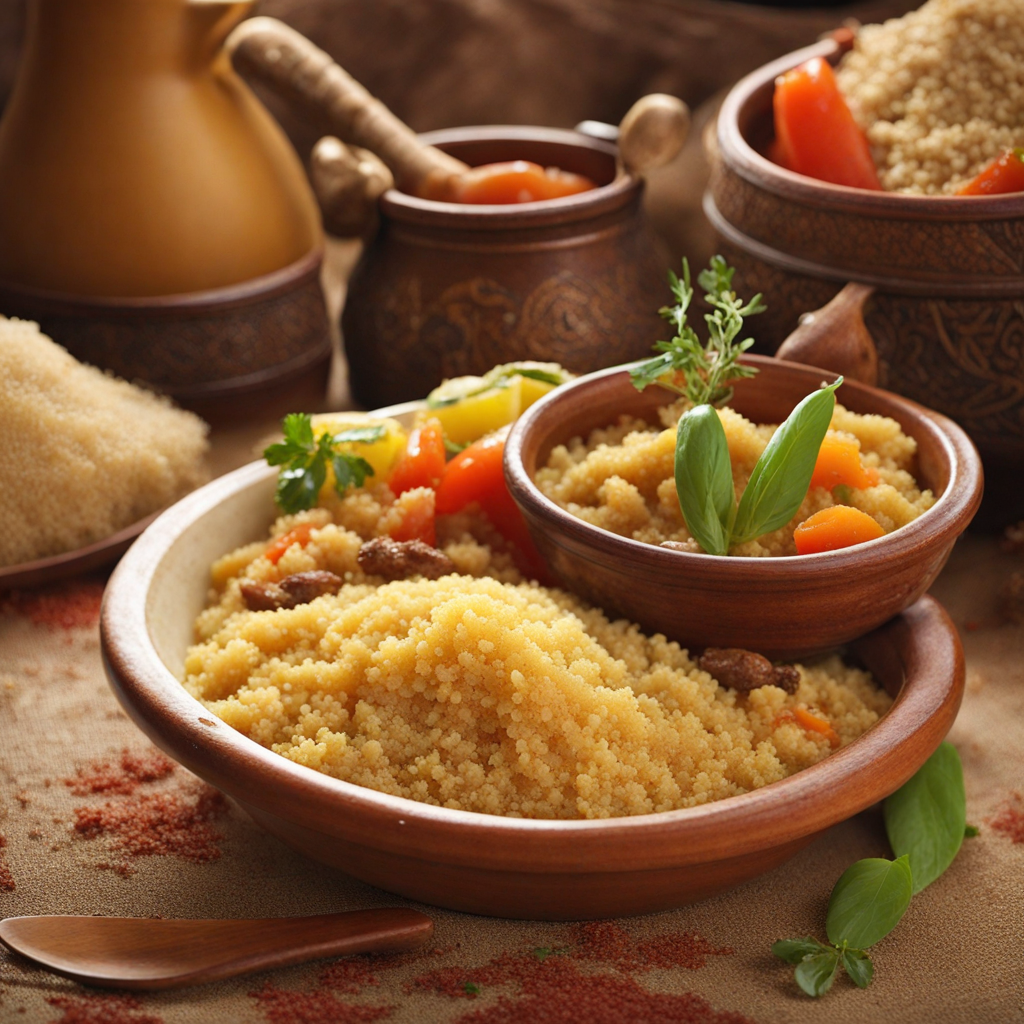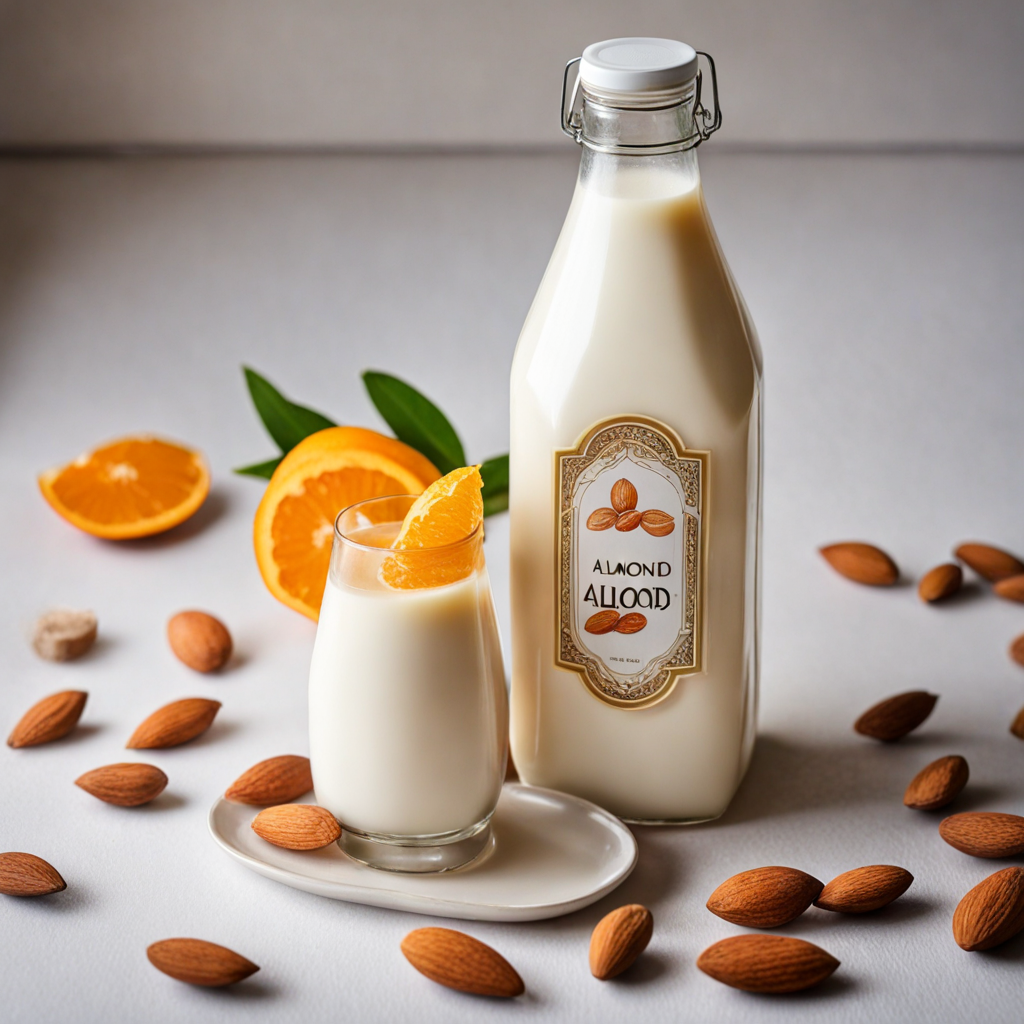Bastilla
Bastilla, a traditional Moroccan dish, is a mesmerizing blend of flavors and textures that captivates the palate. At its core, this savory pie combines tender, spiced meat—typically pigeon or chicken—with a delicate balance of sweet and savory elements. The meat is slow-cooked with aromatic spices such as cinnamon, saffron, and ginger, enhancing its depth and creating a rich, fragrant filling. The addition of almonds and eggs gives the dish a unique creaminess, while the crispy layers of thin pastry, known as warqa, envelop the filling, providing a satisfying crunch with each bite. What sets Bastilla apart is its exquisite layering of flavors. The top layer of the pastry is often dusted with powdered sugar and cinnamon, presenting an intriguing contrast to the savory meat inside. This sweet topping not only adds a visual appeal but also a delightful surprise that balances the dish's richness. Served warm, Bastilla is often accompanied by a side of fresh herbs or a light salad, which enhance its complex flavor profile, making each forkful a delightful experience. Traditionally enjoyed during celebrations and special occasions, Bastilla embodies the essence of Moroccan hospitality. Its preparation is an art in itself, reflecting the intricate culinary techniques and the cultural heritage of Morocco. Each bite tells a story of tradition and festivity, inviting those who try it to partake in a culinary journey that transcends borders. For anyone seeking to explore new tastes, Bastilla offers an unforgettable adventure that beautifully marries the sweet and savory in a way only Moroccan cuisine can.
How It Became This Dish
The Delicious Journey of B'astilla: A Moroccan Culinary Treasure #### Origins and Historical Context B'astilla, also spelled pastilla or bastilla, is a traditional Moroccan dish that embodies the fusion of cultures and flavors that characterize Moroccan cuisine. Its origins can be traced back to the medieval period, when Spain and North Africa were intertwined through trade and cultural exchange. The dish is believed to have emerged in the cities of Fez and Marrakech, where influences from Berber, Arab, and Andalusian cooking converged. The name "b'astilla" is derived from the Arabic word "bast," meaning "to spread," which refers to the thin layers of pastry that envelop the filling. The dish traditionally features pigeon, although chicken has become a popular substitute. The use of pigeon is indicative of its aristocratic roots, as pigeon meat was considered a delicacy among the wealthy. The preparation of b'astilla is a labor-intensive process, reflecting the importance of hospitality and celebration in Moroccan culture. #### Cultural Significance B'astilla holds a special place in Moroccan cuisine, often served during significant celebrations such as weddings, religious holidays, and family gatherings. It is not just a meal; it is a symbol of generosity and the art of Moroccan cooking. Traditionally, it is served as a starter or an appetizer, showcasing the chef's culinary skill through its intricate assembly and diverse flavors. The dish's layers represent the complexity of Moroccan society, where various ethnic groups and cultures have come together to create a vibrant tapestry of traditions. The combination of sweet and savory flavors in b'astilla reflects the Moroccan penchant for balancing contrasting tastes. The use of spices such as saffron, cinnamon, and coriander highlights the country's rich spice trade history and the importance of flavor in Moroccan cuisine. #### Ingredients and Preparation B'astilla is notable for its unique combination of ingredients. The filling typically includes shredded meat, almonds, eggs, and a blend of spices, all enveloped in a flaky pastry called warqa, which is similar to phyllo dough. The preparation process begins with marinating the meat in spices, which infuses the dish with rich flavors. The meat is then slow-cooked with onions, garlic, and a mixture of spices to create a tender and flavorful filling. Once the filling is prepared, the next step involves layering the warqa. This delicate pastry is carefully brushed with melted butter, and the filling is placed in the center before folding and shaping it into a round pie. The final touch is a dusting of powdered sugar and cinnamon on top, which adds an unexpected sweetness that contrasts beautifully with the savory filling. #### Evolution Over Time While b'astilla has retained its core components, its preparation and presentation have evolved over time. In recent years, chefs have experimented with various fillings, incorporating seafood, vegetables, and even exotic ingredients to cater to modern palates. The traditional pigeon filling may now be replaced with duck, rabbit, or even vegetarian options, allowing for greater culinary creativity. Moreover, the presentation of b'astilla has also undergone a transformation. While it was once served as a whole pie, modern interpretations often involve individual portions or elegant plating, appealing to contemporary dining aesthetics. This evolution reflects a broader trend in Moroccan cuisine, where traditional dishes are reimagined for a new generation of food lovers. The globalization of culinary culture has also introduced b'astilla to international audiences. Chefs outside of Morocco have embraced this dish, incorporating it into their menus and showcasing its unique flavors. This exchange has not only expanded the reach of Moroccan cuisine but has also sparked interest in its rich history and cultural significance. #### The Role of B'astilla in Contemporary Moroccan Cuisine In contemporary Morocco, b'astilla remains a beloved dish and an integral part of the national identity. It is often featured in cooking classes and culinary tours, drawing both locals and tourists who wish to learn the art of Moroccan cooking. The dish is celebrated not only for its taste but also for the communal experience it fosters. Preparing and sharing b'astilla is a social activity that brings families and friends together, reinforcing bonds and creating lasting memories. Furthermore, b'astilla has found its way into the hearts of food enthusiasts globally. With the rise of culinary tourism, many travelers seek out authentic Moroccan dining experiences, and b'astilla is often at the top of their must-try list. The dish has also been featured in various food festivals and competitions, showcasing its enduring popularity and adaptability. #### Conclusion In essence, b'astilla is more than just a dish; it is a reflection of Morocco's rich cultural heritage and culinary evolution. Its origins in the medieval period, combined with its significance in Moroccan celebrations and gatherings, make it a dish steeped in history and tradition. As it continues to evolve and adapt to modern tastes, b'astilla stands as a testament to the resilience and creativity of Moroccan cuisine. Whether enjoyed in a bustling Moroccan souk or a fine dining restaurant in a cosmopolitan city, b'astilla serves as a delicious reminder of the rich tapestry of flavors and cultures that define Moroccan culinary traditions. Its journey from a royal delicacy to a beloved dish enjoyed by many around the world illustrates the power of food to connect people across time and space, making b'astilla a true culinary treasure.
You may like
Discover local flavors from Morocco







